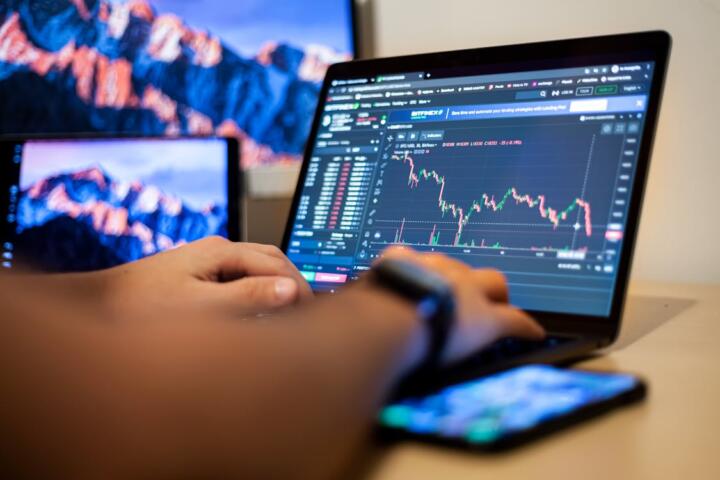Global trade is expected to maintain a steady pace in early 2025, according to the World Trade Organization (WTO), despite ongoing geopolitical tensions and economic uncertainties. The organization’s latest projections indicate that trade volumes will see moderate growth, supported by resilient consumer demand and recovering supply chains.
While global economic conditions remain unpredictable, the WTO points to easing inflationary pressures and stabilizing commodity prices as key factors that could help sustain trade activity. However, risks such as trade restrictions, geopolitical conflicts, and fluctuations in major currencies may still pose challenges.
The forecast comes at a time when many economies are trying to rebound from the disruptions of previous years. Supply chain bottlenecks, high energy prices, and inflationary concerns weighed heavily on global trade in 2023 and 2024. However, gradual improvements in logistics and transportation networks have helped stabilize trade flows. The reopening of key manufacturing hubs and the adoption of digital trade solutions have also played a role in supporting recovery.

Factors Driving Trade Stability
One of the main drivers of stable trade growth is the resilience of consumer demand, particularly in sectors such as technology, pharmaceuticals, and food products. Despite economic headwinds, global consumption has remained steady, with many businesses adjusting their strategies to meet shifting market demands.
The WTO also highlights the role of stabilizing commodity prices in supporting trade. After experiencing sharp fluctuations in recent years, energy and raw material prices have begun to level off, providing relief to industries that rely on these inputs. This stability has contributed to more predictable trade patterns, reducing uncertainty for businesses engaged in international commerce.
Additionally, improved supply chain efficiencies have played a crucial role in preventing major trade disruptions. The pandemic exposed vulnerabilities in global supply networks, prompting companies and governments to invest in more resilient logistics and production strategies. Advances in automation, artificial intelligence, and digital trade platforms have helped streamline cross-border transactions, making it easier for businesses to navigate complex global markets.
Challenges and Risks
Despite the generally positive outlook, several risks could still impact trade growth in 2025. One of the main concerns is the rise in protectionist trade policies and tariffs. Many countries have introduced new trade barriers to protect domestic industries, which could slow the pace of global trade expansion. The WTO has cautioned against such measures, emphasizing the importance of open markets and international cooperation.
Geopolitical tensions also remain a significant factor. Conflicts in key regions, such as Eastern Europe and the Middle East, have the potential to disrupt trade routes and impact global supply chains. The ongoing U.S.-China trade tensions continue to add uncertainty to global markets, with both countries implementing policies that affect the flow of goods and services.
Currency fluctuations are another challenge that could impact trade stability. The strength of the U.S. dollar, euro, and other major currencies influences global trade flows, affecting export competitiveness and the cost of imports. A sudden shift in exchange rates could create instability in emerging markets, particularly those heavily reliant on international trade.
Regional Trade Trends
Trade growth is expected to vary across different regions, with some economies experiencing stronger recoveries than others. Asia, in particular, is projected to lead global trade expansion, driven by strong manufacturing output and robust consumer demand. China, India, and Southeast Asian nations are expected to see steady trade growth, supported by regional trade agreements and investments in infrastructure.
North America is also expected to perform well, benefiting from stable economic growth in the United States and Canada. The United States, in particular, has seen strong consumer spending and business investments, which have contributed to a favorable trade environment.
In contrast, Europe may experience slower trade growth due to ongoing economic challenges. High energy costs, inflationary pressures, and political uncertainties have weighed on trade activity in the region. However, some European economies, particularly Germany and the Netherlands, continue to play a crucial role in global trade due to their strong industrial bases and strategic trade partnerships.
Emerging markets in Africa and Latin America are expected to see mixed trade performances. While some countries are benefiting from increased investment in natural resources and manufacturing, others continue to face challenges related to infrastructure, political instability, and access to global markets. The African Continental Free Trade Area (AfCFTA) is expected to play a key role in boosting intra-African trade, creating new opportunities for economic growth.
Looking Ahead
The WTO’s outlook suggests cautious optimism for global trade in early 2025. While risks remain, the overall stability of trade flows reflects the resilience of the global economy and the adaptability of businesses and policymakers.
To sustain growth, the WTO continues to advocate for open trade policies and international cooperation. The organization has urged governments to avoid restrictive trade measures and instead focus on creating a fair and transparent trading environment.
As businesses and economies navigate an increasingly complex global landscape, innovation and collaboration will be key to ensuring continued trade stability. With improving supply chains, digital transformation, and efforts to address trade barriers, global commerce is expected to maintain a steady course in the months ahead.
Support InfoStride News' Credible Journalism: Only credible journalism can guarantee a fair, accountable and transparent society, including democracy and government. It involves a lot of efforts and money. We need your support. Click here to Donate
